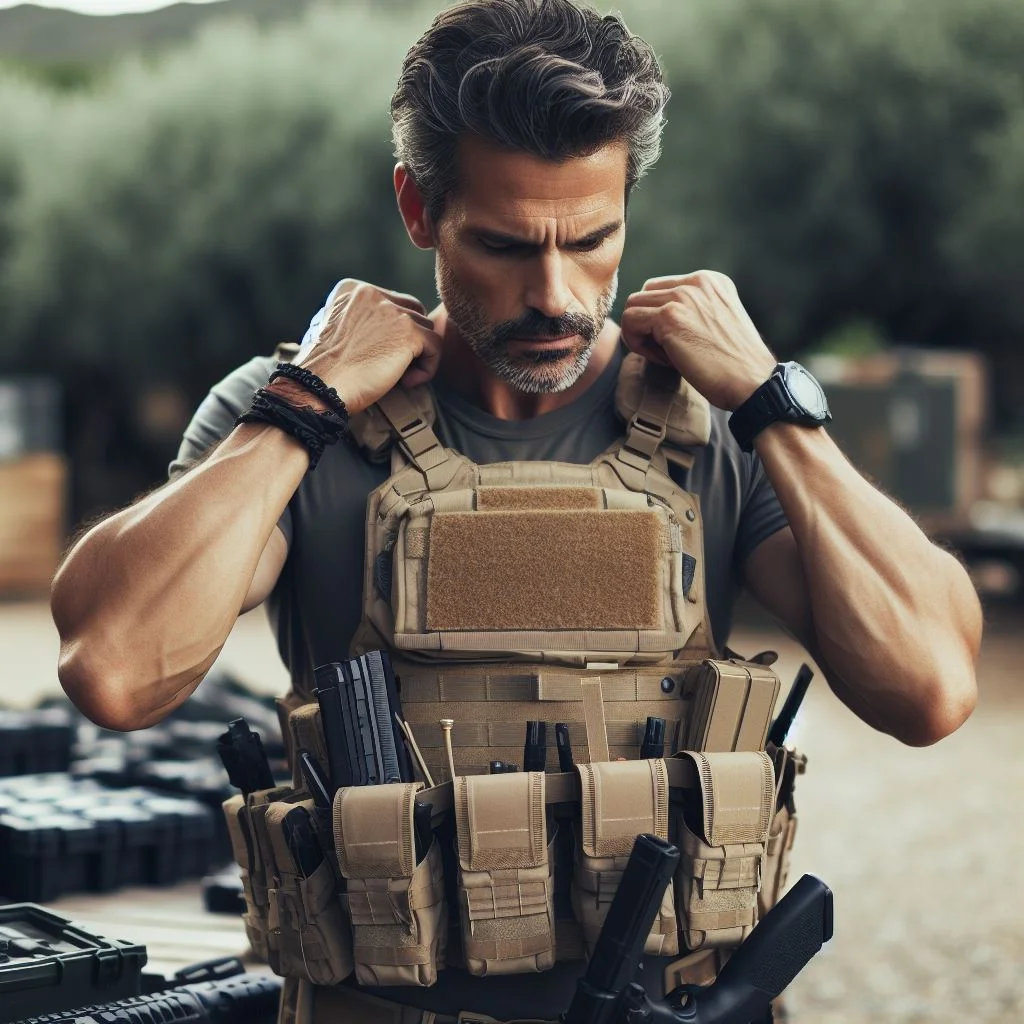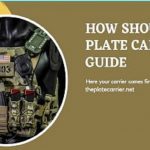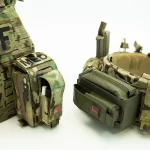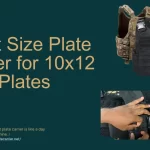Where Should a Plate Carrier Sit? Finding the perfect fit for your plate carrier is crucial for comfort, mobility, and protection. A properly positioned plate carrier allows for quick access to your equipment and distributes weight evenly, minimizing fatigue and strain. This guide will help you determine Where should a plate carrier sit, ensuring optimal performance and safety.
Read Our Reviews of Airsoft Vests and Concealed Carriers.
Where Should a Plate Carrier Sit? | Complete Guide
A properly fitting plate carrier is crucial for comfort, mobility, and, most importantly, maximum protection. Its placement on your torso directly affects performance and safety. So, where exactly should a plate carrier sit?

General principles of fitting Your Plate carrier:
- Centered on the torso: Your plate carrier should be centered on your torso, both horizontally and vertically. This aligns the ballistic plates with your vital organs for maximum protection.
- High enough: The top of the cummerbund (the side panels) should sit at least 2 inches above your belly button. This ensures the plates cover your vital organs even when you bend or crouch.
- Snug but not tight: The plate carrier should be snug but not constrict your movement or breathing. You should be able to take deep breaths and move your arms freely.
- Shoulder straps adjusted: The shoulder straps should be adjusted so that the weight of the plate carrier is distributed evenly across your shoulders. The straps shouldn’t dig into your skin or create discomfort.
- Cummerbund tightened: The cummerbund should be tightened to secure the plate carrier firmly against your body. It should prevent the plates from shifting or moving around during movement.
Specific considerations:
- Body type: Different body types require slight adjustments in plate carrier placement. For example, individuals with shorter torsos may need to adjust the height of the cummerbund slightly upward.
- Plate size: The size of your ballistic plates will also influence the optimal placement of the plate carrier. Make sure the plates fit snugly within the carrier’s pockets without overlapping or leaving gaps.
- Activity: If you’ll be engaging in strenuous activity, ensure the plate carrier is secure enough to prevent excessive movement but not so tight that it restricts your breathing.
Where Should a Plate Carrier Sit? (Tools and Techniques)
- Mirror: Use a mirror to check your alignment and ensure the plate carrier sits evenly on your body.
- Partner: Have a partner help you adjust the straps and cummerbund for a secure fit.
- Dummies: Utilize ballistic dummy plates to simulate the weight and feel of real plates when adjusting the carrier.
- Professional guidance: If unsure about the proper fit, seek guidance from a firearms instructor or equipment specialist.
Related Guide: The Complete Setup Guide Of Plate Carrier
Where Should a Plate Carrier Sit? (Why does a proper sit matter?)
A lot of people opt for plate carriers without checking how they sit. They might even think there’s no such thing as a proper sit. That’s not true! There are different types of sitting for different styles and levels of protection. The wrong fit will make you more vulnerable when under attack, so knowing where your plate carrier should sit is essential.
Conclusion
Where Should a Plate Carrier Sit? Finding the perfect fit for your plate carrier is essential for comfort, mobility, and protection. By following the guidelines in this guide and tailoring them to your specific body type and needs, you can achieve an optimal fit that balances comfort with safety. Remember, a well-fitting plate carrier can be your best friend in critical situations, so invest the time and effort into getting it right.
FAQs
1. Should the plate carrier touch my neck?
No, the plate carrier should not touch your neck. This can restrict your movement and breathing. The top edge of the plate carrier should sit roughly in line with your nipple line, leaving enough space for comfortable neck movement.
2. Can I wear a plate carrier over a jacket?
Yes, you can wear a plate carrier over a jacket, but it’s important to ensure the jacket is not too thick or bulky. A thick jacket can interfere with the fit of the plate carrier and potentially reduce its effectiveness.
3. How often should I clean my plate carrier?
The frequency of cleaning your plate carrier will depend on how often you use it and the conditions it’s exposed to. However, it’s generally recommended to clean it at least once a month. You can use mild soap and water to clean the fabric, and make sure to dry it thoroughly before storing it.
4. What are some common mistakes people make when wearing a plate carrier?
- Wearing the plate carrier too low or too high
- Not adjusting the straps and cummerbund for a proper fit
- Wearing a plate carrier that is too large or too small
- Not wearing the correct size plates
- Not cleaning the plate carrier regularly


![How Many Mags On Plate Carrier? [2024 Ultimate Guide] How many mags on plate carrier](https://theplatecarrier.net/wp-content/uploads/2022/08/How-many-mags-on-plate-carrier-150x150.jpg)


